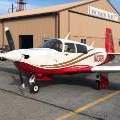Quote: Shadrach
1) Your premise is flawed. There is no statistical data to show that LOP ops will have any affect on TBO. Even the most staunch proponents of LOP ops will tell you that.
Sure, presuming TBO is TBO is 2000... if you fly slower while turning the prop at the same speed, you'll bring your engine closer to the TBO time in order to cover the same distance.
2) Even if you could quantify the difference is a plane with an engine that has gone 300,000nm in 2000hrs going to be worth less than a plane that has gone 300,000nm in 1900hrs?
Well, we know how engine time plays a role in appraising an airplane. Since the buyer can't accurately assess the inners of the engine, they have to look at the hours.
3) The number of air miles logged per engine is affected by so many variables (wind, routing, holds, restricted areas) as to make the 4 to 6kts you lose by "properly" running LOP (those of you running still 50LOP at 8500 take note) a rounding error. Additionally, for shorter VFR flights below 3500ft speed difference LOP vs ROP is very, very small, however savings in FF can approach 40%. Are all of your flights purely travel based? Is a 1hr joy ride anymore satisfying at ~160kts vs ~155kts? Is that same joy ride more satisfying at ~16.5GPH vs ~10.5GPH?
Wow. I am simply amazed to what lengths people are willing to bend the numbers in order to justify their point of view. 16.5GPH??? Really? Where did you get that from? Both you and I are flying IO-360s. Even for 75% cruise at 100ROP (not 50 or 25), it burns 12.5gph at sea level in the most inefficient configuration possible! 75% power LOP on the other hand would burn 10gph. That's only 20% savings. Once you factor an efficient ROP cruise at 10.5GPH 25ROP vs 9-10GPH 70-75% power, the difference isn't particularly big at all.
While I appreciate the lower temperatures and gas savings, I don't think it's necessary to pretend like it makes THAT big of a difference in fuel savings on our 200HP engines.


